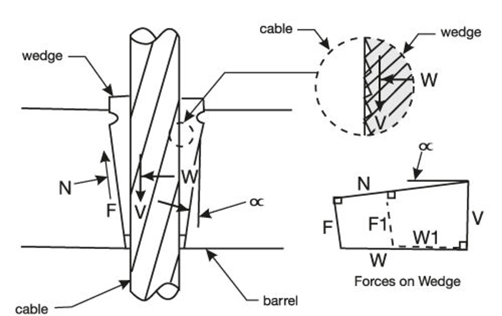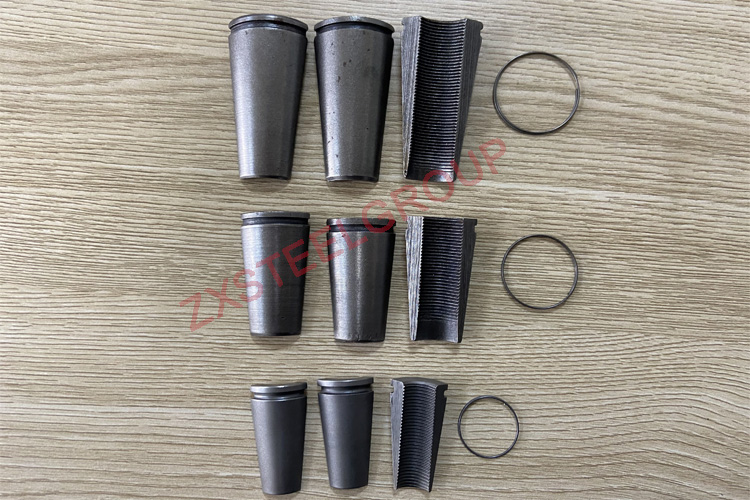
The Wedge Anchorage of the Cable Bolt
The anchorage of most cable bolts consists of a wedge barrel
and a 2- or 3-part wedge. The wedge segments grip the cable by means of tooth
shaped threads which are forced into the surface of the cable wires. Warning:
If friction increases (due to corrosion), a larger F will reduce the clamping
force. As V increases, all other forces can only increase if the wedge can seat
deeper into the barrel. If the wedge is restrained to do so (i.e. by corrosion
or dirt accumulation), the clamping force can not increase with the pulling
force causing slippage when the load on the cable bolt gradually increases
during service life. To avoid slippages during use, it is important that the
cable bolt is fully stressed at time of installation to a force equal to 0.5
Fu. (ie. 50% of the capacity of the cable).

The clamping force W is highly dependent on the friction between wedge and wedge hole. For normal friction conditions, the clamping force W is more than 4 times the cable pulling force V and it adjusts with the pulling force V. When a wedge is properly seated, radial cracks may develop indicating adequate seating.
The
wedge can be supplied with a rubber O-ring or a metal spring ring holding the
wedge segments together.


If you have any question, please do not hesitate to send us a message
Address: No. 1738, 17th Floor, No. 1 Mall, Shangdu Road, Zhengdong New District, Zhengzhou City, Henan Province, China
Email: zxminesupport@zxsteelgroup.com
Tel: +86-199 3712 3680
© 2020 ZXSTEELGROUP